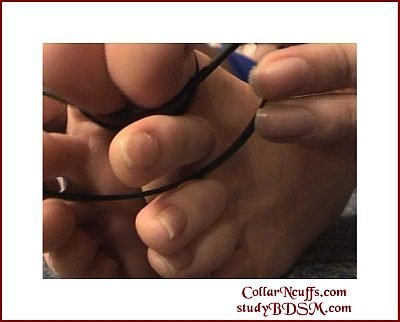Bastinado is an art form, also known as foot whipping, is a form of corporal punishment that has been employed across numerous cultures for centuries. It should never be entered into lightly. This is why we we have created this guide for beginners.
Table of Contents
Bastinado: The Ancient Practice
The term “bastinado” derives from the Spanish word “bastón,” meaning “stick” or “cane,” reflecting the primary instrument used in this practice. Historically, bastinado has been a method of discipline and punishment, its applications ranging from judicial penalties to military discipline.
The roots of bastinado can be traced back to ancient civilizations such as Egypt and China. In ancient Egypt, it was used as a means to enforce labor among slaves and workers, while in ancient China, it served as a judicial punishment for various crimes. The practice was not limited to these regions; it also found a place in medieval Europe and the Ottoman Empire, where it was employed to maintain order and discipline among soldiers and civilians alike.

In medieval Europe, bastinado was often executed by striking the soles of the feet with a rod or cane, a method believed to be both effective and less likely to leave permanent scars compared to other forms of corporal punishment. The Ottomans, on the other hand, integrated bastinado into their legal system, using it as a common form of punishment for crimes ranging from theft to insubordination.
Despite its ancient origins, bastinado has not entirely vanished in modern times. While its use as an official form of punishment has largely declined, it can still be found within certain subcultures and niche communities, where it is sometimes practiced consensually as part of BDSM activities. This contemporary application, however, is vastly different from its historical usage, emphasizing mutual consent and safety.
By exploring the extensive history and diverse cultural contexts of bastinado, one can gain a deeper understanding of its complexities and enduring presence. This background provides a valuable perspective on how an ancient form of punishment has evolved and been adapted through the ages.
The Evolution Through the Ages
Bastinado, a form of corporal punishment involving the beating of the soles of the feet, has a rich and varied history. This practice can be traced back to ancient civilizations, where it served multiple purposes, including judicial punishment, military discipline, and interrogation. Initially, bastinado’s rudimentary methods employed simple sticks or rods, but as time progressed, the tools and techniques used evolved significantly.
In ancient Egypt, bastinado was utilized as a method of extracting confessions and enforcing discipline among slaves and workers. Similarly, in ancient China, it was integrated into the judicial system as a form of punishment for various offenses. The practice was meticulously documented in Chinese legal texts, illustrating its systemic application and the societal norms surrounding corporal punishment.
During the Middle Ages, bastinado found its way into European judicial systems. It was often inflicted as a penalty for minor crimes, serving both as a deterrent and a means of public humiliation. The military also adopted bastinado as a disciplinary measure to maintain order and compliance among soldiers. The European approach to bastinado saw an evolution in the instruments used, transitioning from simple rods to more specialized tools designed to maximize pain while minimizing permanent damage.
The Ottoman Empire is particularly noted for its use of bastinado, where it was known as falaka. The Ottomans refined the technique, employing a wooden plank and ropes to secure the victim’s feet, ensuring a more controlled and effective administration of the punishment. This method was not only a tool of coercion but also a demonstration of power, reinforcing the authority of the ruling class.
In more recent history, bastinado has been reported in various regimes as a method of interrogation. Its application in these contexts often aimed at extracting information or confessions through coercion. The evolution of bastinado’s methodology in these scenarios underscores its persistent utility in exerting control and dominance.
Overall, the transformation of bastinado across different cultures and eras highlights its adaptability and enduring presence. Whether employed for punishment, coercion, or power demonstration, this practice has left an indelible mark on the historical landscape of corporal punishment.
How to Perform Safely: A Beginner’s Guide
For those intrigued by the practice of bastinado and considering its exploration, understanding the essential principles of safety and respect is crucial. Bastinado, the act of striking the soles of the feet, requires careful preparation and communication between participants to ensure a controlled and consensual experience.
To begin, selecting appropriate tools and materials is vital. Implements such as canes, rods, or specially designed whips are commonly used in bastinado. These tools should be smooth, flexible, and free of any sharp edges to avoid causing unintended injuries. It’s advisable to start with lighter implements and gradually progress to heavier ones as you gain experience and confidence.
Setting boundaries and establishing safe words are fundamental steps in practicing bastinado. Before any session begins, both parties should discuss their limits, preferences, and any potential concerns. A safe word—a pre-agreed term that either participant can use to pause or stop the activity—ensures that communication remains clear and that both parties feel secure throughout the session. This mutual understanding fosters a respectful and consensual environment.
Proper positioning of the feet is another critical factor in performing bastinado safely. The recipient should be comfortably seated or lying down, with their feet elevated and accessible. This position minimizes strain and ensures that the feet remain steady during the session. Additionally, the person administering the strikes should maintain a consistent rhythm and avoid targeting the same spot repeatedly, as this can lead to bruising or more severe injuries.
Striking techniques are equally important for minimizing risk. Begin with light, controlled taps to gauge the recipient’s tolerance and gradually increase the intensity if both parties are comfortable. Always monitor the recipient’s reactions and adjust the force and frequency of the strikes as needed. Consistent communication and attentiveness are key to a safe and enjoyable experience.
Aftercare is essential following a bastinado session. The recipient’s feet should be examined for any signs of bruising or swelling. Applying a cold compress can help reduce any immediate discomfort. Gentle massage and moisturizing lotion can aid in the recovery process, promoting relaxation and healing. Proper aftercare not only addresses physical well-being but also reinforces the trust and connection between participants.
By adhering to these guidelines, beginners can explore the practice of bastinado in a responsible and respectful manner, never forgetting the dangers. Ensuring safety and clear communication enhances the overall experience, allowing both parties to engage in this ancient practice with confidence and mutual respect.
Contemporary Culture: Uses and Perceptions
Beyond the realms of consensual adult play, bastinado has also made its way into various forms of media, literature, and art. Its portrayal in these mediums can range from historical depictions to more sensationalized or eroticized interpretations. For instance, in literature and film, bastinado may be utilized to illustrate a character’s resilience or to add a layer of intensity to a storyline. These representations can significantly influence public perception, often shaping how bastinado is viewed by those outside of the communities where it is practiced.
However, the practice of bastinado is not without its ethical considerations and debates. The primary concern is ensuring that consent is always obtained and respected, as non-consensual acts can lead to significant physical and psychological harm. Legality is another aspect, as the acceptance and regulation of such practices can vary widely across different regions and cultures. Additionally, there are ongoing discussions about the potential psychological impact of engaging in or witnessing bastinado, with some arguing that it can be a form of healthy, consensual expression, while others raise concerns about the potential for abuse or long-term effects.
By examining bastinado’s role in contemporary culture, its depictions in media, and the ethical frameworks that surround it, individuals can gain a nuanced understanding of this complex practice. This informed perspective allows for a more balanced view, acknowledging both the consensual, positive experiences of participants as well as the critical considerations that must be kept in mind.
Resource Article : MissBonnie 2024







